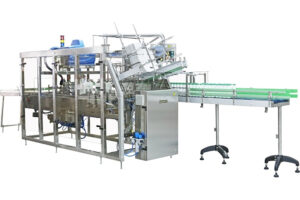Creating a Successful Packaging Strategy
Product packaging is an important feature of your product. However, there are different types of packaging, so planning your packaging strategy is as important as the product itself.

As a product producer, there are three types of packaging you need to consider:
- Primary
- Secondary
- Tertiary
A successful packaging strategy must consider all these levels of packaging.
The first level of packaging is the main package that the product comes in. This is primary packaging. Primary packaging can be any type of container from a box or canister, to a jar or bottle.
Your primary packaging is typically printed with your logo and/or slogan, to give your product brand recognition. This is key to marketing your product and helping it grab consumer’s attention on retail shelves.
What’s printed on your primary packaging also ensures that the consumer will have confidence and trust when they purchase from you.
While primary packaging tells consumers about both your company and what’s inside the package, it also protects the product against damage while on retail shelves.
Next, there is secondary packaging.
At Holland Packaging, we provide shrink wrap bundler solutions to automate secondary packaging. While shrink bundling as secondary packaging adds additional protection to your product, it also provides other benefits.
For instance, it can be used in conjunction with corrugated trays to add extra support to shrink wrap bundled products.
It can also be used to create various quantity product packs for different promotional pricing throughout the year.
Automated shrink bundling with tool-less changeovers for switching pack-pattern sizes is just one of the benefits that our solutions provide. Efficiently shrink bundling with printed registration film for different branding is another.
Shrink bundling also works on the retail end to increase the efficiency of shelf-stocking and setting up product displays.
The third type of packaging is referred to as tertiary packaging. An example of this is large pallets of products that get stretched-wrapped by industrial machines for warehousing and big shipments.
This is typically the last step in packaging although, for smaller product runs, secondary packaging may be all that’s needed.
From an operational standpoint, all packaging provides protection, and a successful packaging strategy must take into consideration all levels of packaging.
Holland Packaging is here today and tomorrow to keep you moving forward. GET IN TOUCH TODAY!

